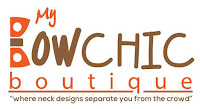TTABlog Quarterly Index: October - December 2016
E-mail subscriptions to the TTABlog are available. Just enter your e-mail address in the box on the right to receive a daily update via Feedblitz. You may also follow the blog on Twitter (here). And don't forget to leave your comments! [Note that E-mail subscribers may have to surf to the blog to see comments]. Finally, please report any broken or inoperative links, as well as any errors and omissions, to the TTABlogger at jwelch at wolfgreenfield dot com.
Section 2(d) - Likelihood of Confusion:
- TTAB Test: Which of These Three Section 2(d) Refusals was Reversed?
- Third-Party Uses Bring TTAB Reversal of ACCURATE ROOFING Section 2(d) Refusal
- TTAB Test: Is MONARCH ROASTING Confusable With LA MONARCA BAKERY & CAFE?
- TTAB Test: Are These Two "Black" Labels Confusable for Energy Drinks?
- Is BUFFALO JAYNE Confusable with BUFFALO for Clothing? [Yes]
- TTAB Test: Are These Two Design Marks Confusable for Clothing?
- TTAB Test: Is WOODY WHEAT Confusable With WOODY STOUT and WOODY BROWN ALE (Different Owners) for Beer? [Yes]
- TTAB Dismisses HEALTHPLEX Cancellation Petition Due to Differences in Services
- TTAB Test: Is FUNDAMENTAL DASHBOARD Confusable With FUNDAMENTAL CAPITAL for Financial Services? [Yes]
- TTAB Test: Sink Your Teeth Into This Section 2(d) "KABOBERY" Appeal
- TTAB Test: Is "LUCKY SUSHI BAR" Confusable With "LUCKY BAR" for Restaurant Services? [Yes]
- TTAB Test: Which of These Four Section 2(d) Refusals Were Reversed?
- LEFTY’S Restaurant Strikes Out In TTAB Section 2(d) Appeal
- TTAB Test: Are HOLAIRA and ALAIR Confusable for Lung-Related Medical Devices? [Yes]
- TTAB Test: Is "TAP IT" Merely Descriptive of Beer? Confusable with "TAP IT" for Energy Drinks? {No, Yes]
- TTAB Test: Is THE BEVERLY Confusable with BEVERLY JEANS & Design, Both For Jeans? [Yes]
- TTAB Test: Is Buttock-Lifting Underwear Related to Breast-Lifting Tape, for Section 2(d) Purposes? [Yes]
- TTAB Test: Is "IT'S PIRATE TIME" Confusable With "PYRAT" for Distilled Spirits? [Yes]
- TTAB Test: Is "NOT SO SIMPLE SYRUP" Confusable with "KEEP IT SIMPLE SYRUP" for Syrup? [No]
- TTAB Test: Which One of these Three Section 2(d) Refusals Was Reversed?
- TTAB Test: Is TRINITY for Handbags Confusable with TRINITY for Jewelry? [Yes]
Section 2(e)(1) - Mere Descriptiveness:
- CHEESE ZOMBIES Not Generic But Merely Descriptive of Filled Bakery Products
- TTAB Test: Is RANGE FARMS Merely Descriptive of Poultry? [No]
- TTAB Affirms Refusal of "HARAJ" (Persian) for Advertising Services: Highly Descriptive, Lacks Acquired Distinctiveness
- TTAB Test: Which of these Three Mere Descriptiveness Refusals Was Reversed?
- TTAB Test: Is THE SALAD STATION Merely Descriptive of Restaurant Services? [Yes]
- TTAB Test: Is "TAP IT" Merely Descriptive of Beer? Confusable with "TAP IT" for Energy Drinks? {No, Yes]
- TTAB Test: Is CARS Merely Descriptive of Automobile Data Collection Software?
- TTAB Test: Is CLASSIC AUTO ROD (Stylized) Merely Descriptive of Auto Dealerships? [Yes]
- TTAB Test: Which One of These Four Mere Descriptiveness Refusals Was Reversed?
Section 2(e)(4) - Primarily Merely a Surname:
- Frequently Occurring Surnames from the 2010 Census
- TTAB Reverses 2(e)(4) Refusal of Very Rare Surname "VEASY"
- Precedential No. 34: Divided TTAB Panel Affirms 2(e)(4) Refusal of Rare Surname ADLON
- "HECHTER" Primarily Merely a Surname (for Leather Goods and Clothing), Says TTAB
- Precedential No. 30: TTAB Affirms Section 2(e)(4) Refusal of Rare Surname "ALDECOA"
- Precedential No. 29: TTAB Affirms Surname Refusal of "BARR GROUP"
- TTAB Affirms Refusal of "HARAJ" (Persian) for Advertising Services: Highly Descriptive, Lacks Acquired Distinctiveness
- TTAB Finds Acquired Distinctiveness for Headset Configuration Mark
- TTAB Sustains Opposition to PROGENEALOGISTS for Genealogical Services, Finding Acquired Distinctiveness Lacking
- TM Specimen Fails to Associate Mark With Goods, Says TTAB
- TTAB Affirms Refusal of ULTRA TRIMMER for Illegal Drug (Marijuana) Paraphernalia
- TTAB Test: Is This Specimen Acceptable for "ELLE SCHNEIDER" for Video Production and Script Writing Services?
- TTAB Test: Does This Specimen Support Registration of FILAMENT TOWER?
- Precedential No. 32: Marijuana Vaporizers Are Illegal Under CSA, TTAB Affirms Two "JUJU" Refusals
- TTAB Enters Summary Judgment in TIGER SHARK Opposition - Lack of Bona Fide Intent
- On Summary Judgment, TTAB Sustains BONNIE CASHIN Opposition For Lack of Bona Fide Intent
Family of Marks:
Genericness:
Ownership:
Nonuse
- CAFC Reverses TTAB: In-state Sale of Two Hats Constitutes Use of Mark in Commerce
- TTAB Dismisses "Little Grenade" Opposition: Opposer Failed to Prove Nonuse
Recommended Reading:
- Trademark Reporter Commentary: "USPTO Snuffs Out Marijuana Dispensary Service Mark Application ...."
- CAFC Affirms TTAB: Registration Cancelled Due to Invalid Assignment of I-T-U Application
- CAFC Vacates TTAB's JOBDIVA Cancellation: Recruitment Software May Be a Service
- CAFC Reverses TTAB: In-state Sale of Two Hats Constitutes Use of Mark in Commerce
- CAFC Affirms TTAB: 660-Word Proposed Mark Fails to Function As a Trademark
- TTAB Posts January 2017 Hearing Schedule
- TTAB Posts December 2016 Hearing Schedule
- Noting Circuit Split, INTA Files Amicus Brief in Support of FLANAX Petition for Certiorari
- TTAB Posts November 2016 Hearing Schedule
- TTABlog Celebrates its 12th Anniversary!
- Belmora Files Petition for Writ of Certiorari in FLANAX Case
- TTAB Posts October 2016 Hearing Schedule
- Current Roster of TTAB Judges











































